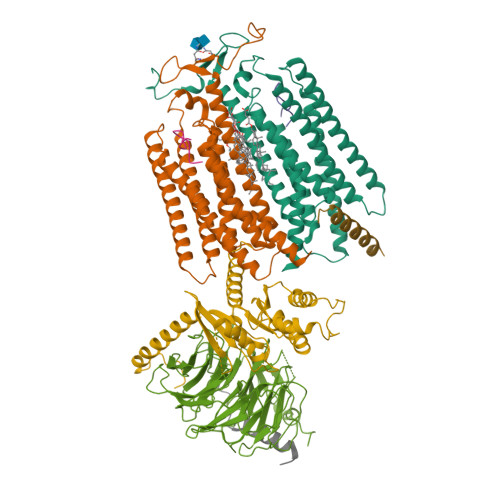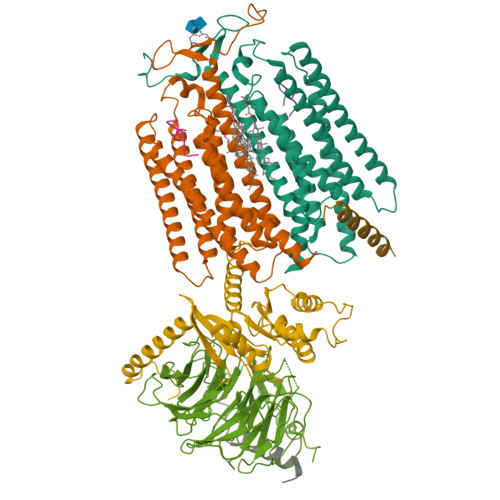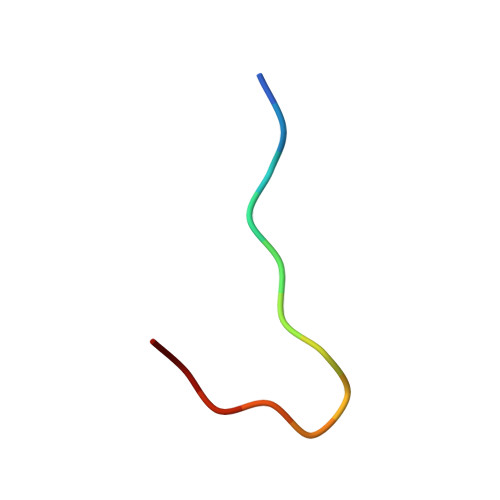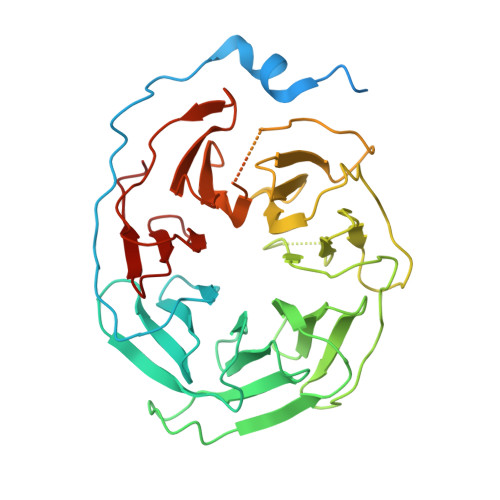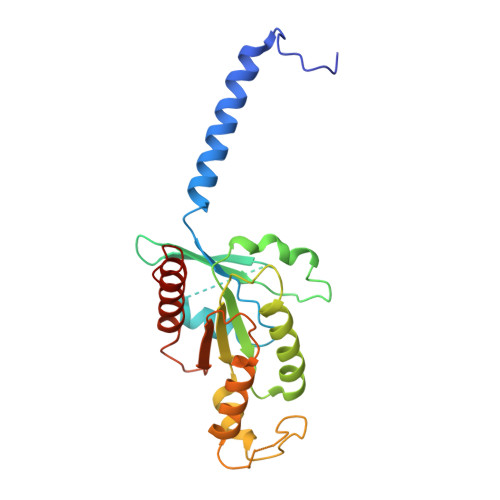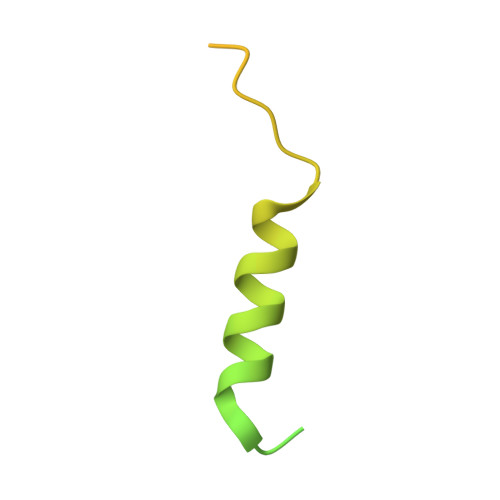Structure of the class D GPCR Ste2 dimer coupled to two G proteins.
Velazhahan, V., Ma, N., Pandy-Szekeres, G., Kooistra, A.J., Lee, Y., Gloriam, D.E., Vaidehi, N., Tate, C.G.(2021) Nature 589: 148-153
- PubMed: 33268889
- DOI: https://doi.org/10.1038/s41586-020-2994-1
- Primary Citation of Related Structures:
7AD3 - PubMed Abstract:
G-protein-coupled receptors (GPCRs) are divided phylogenetically into six classes 1,2 , denoted A to F. More than 370 structures of vertebrate GPCRs (belonging to classes A, B, C and F) have been determined, leading to a substantial understanding of their function 3 . By contrast, there are no structures of class D GPCRs, which are found exclusively in fungi where they regulate survival and reproduction. Here we determine the structure of a class D GPCR, the Saccharomyces cerevisiae pheromone receptor Ste2, in an active state coupled to the heterotrimeric G protein Gpa1-Ste4-Ste18. Ste2 was purified as a homodimer coupled to two G proteins. The dimer interface of Ste2 is formed by the N terminus, the transmembrane helices H1, H2 and H7, and the first extracellular loop ECL1. We establish a class D1 generic residue numbering system (CD1) to enable comparisons with orthologues and with other GPCR classes. The structure of Ste2 bears similarities in overall topology to class A GPCRs, but the transmembrane helix H4 is shifted by more than 20 Å and the G-protein-binding site is a shallow groove rather than a cleft. The structure provides a template for the design of novel drugs to target fungal GPCRs, which could be used to treat numerous intractable fungal diseases 4 .
Organizational Affiliation:
MRC Laboratory of Molecular Biology, Cambridge, UK.








